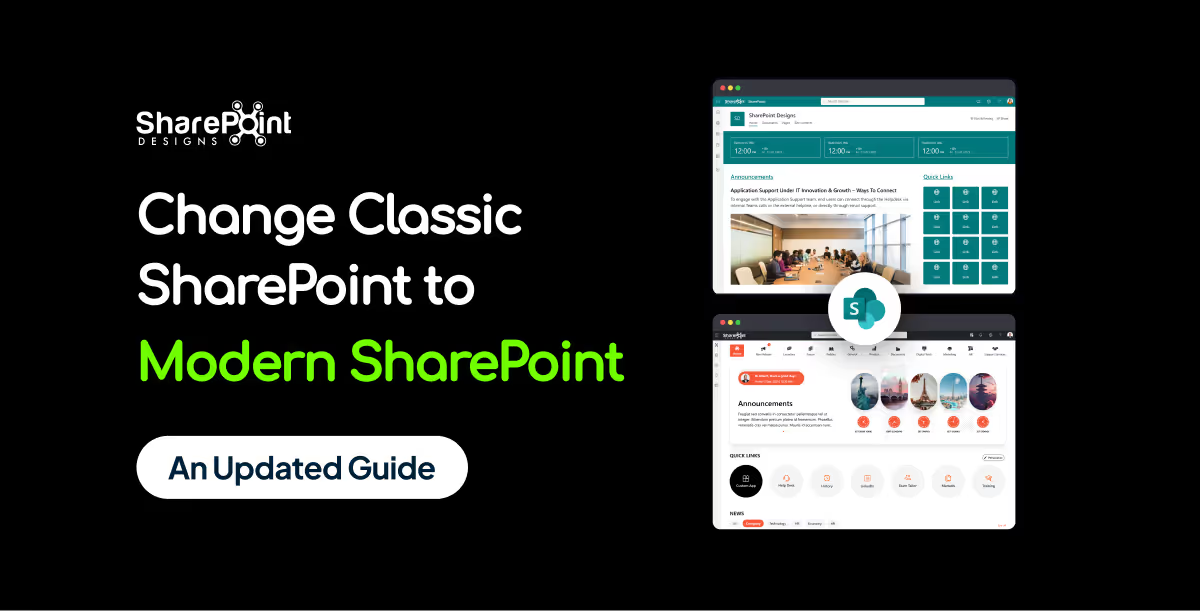Published Date -
How to Make a SharePoint Site Look Like a Professional Website

SharePoint is widely used as an intranet platform, but with a little creativity and configuration, it can be transformed into a visually appealing, modern website whether for internal use or external sharing. In this guide, we’ll walk you through how to make your SharePoint site look and feel like a real website.
Why Make SharePoint Look Like a Website?
Before diving into the how-to, let’s understand the benefits:
- User Engagement: Modern, clean design keeps users interested.
- Professional Appearance: Great for portals, blogs, knowledge bases, and internal sites.
- Responsive Experience: Works well on desktops, tablets, and mobiles.
- Improved Navigation: Clear menus and pages improve usability.
Step-by-Step: Make SharePoint Look Like a Website
1. Choose the Right Site Template
- Go with a Communication Site if your goal is to inform and engage a broad audience.
- Use modern templates like "Topic" or "Showcase" for a sleek layout.
Tip: Avoid classic SharePoint sites unless you're doing heavy customization.
2. Design a Clear and Engaging Home Page
- Use hero web parts to showcase key messages, events, or articles.
- Add quick links to important pages, files, or apps.
- Use section layouts (two columns, grid, etc.) for visual balance.
3. Customize the Branding
- Go to Settings > Change the Look
- Theme: Choose your brand colors.
- Header: Select minimal or compact layout for a clean top nav.
- Logo: Upload your site or company logo.
- Footer: Apply a simple, branded footer with key links and company info.
Pro Tip: Stick to 2-3 main colors to keep the design clean and consistent.
4. Use Modern Web Parts Effectively
Add engaging components like:
- News web part: for updates and announcements.
- Document library: show files like brochures or reports.
- Image or Gallery web part: make your site visually appealing.
- Stream/YouTube web part: add videos for a richer experience.
To know more about modern webparts, please check out this blog
Web Parts That Make Your SharePoint Intranet Feel Like a Website
5. Improve Navigation
- Use Hub Sites for consistent top navigation across multiple sites.
- Create a custom menu in the header or footer with links to important areas.
- Keep your nav labels short and intuitive.
6. Flexible Sections & Layouts
One of SharePoint’s biggest strengths is the ability to create flexible page layouts:
Flexible sections allow you to design pages your way by mixing different layouts such as one-column, two-column, or three-column designs within the same page. You can also add vertical sections for side navigation, quick links, or persistent content.
This flexibility means you can:
- Balance text, images, and videos side by side.
- Highlight important content with wide or full-width sections.
- Keep your design clean and user-friendly without needing custom code.
In short, flexible sections give you full control to build a page that looks modern, professional, and tailored to your audience’s needs.
7. Make It Responsive and Clean
- Avoid cluttering pages with too many web parts.
- Use spacers and dividers to give breathing room between sections.
- Preview your site in a mobile view to ensure it works across all devices.
8. Set a Custom Page as the Home Page
After building your homepage:
- Go to the page.
- Click the gear icon -> Site Contents.
- Click the three dots (...) next to your homepage and select Make homepage.
9. Use Custom Fonts and CSS (Optional, Advanced)
If you’re using SPFx (SharePoint Framework), you can build custom web parts with:
- Tailored fonts and colors
- Custom components (carousel, cards, etc.)
- Enhanced interactivity
⚠️ Requires developer knowledge or help from your dev team.
Example Use Cases
- Internal News Portal
- Learning & Knowledge Hub
- HR or IT Service Portal
- Department Showcase Pages
- Leadership Communication Page
Conclusion
With SharePoint’s modern features, you can go beyond plain document storage and create a vibrant, professional-looking website experience. Whether you're building an internal blog, announcement site, or service portal, SharePoint gives you the tools, you just need to know how to use them effectively.
Start designing today and bring your SharePoint site to life!










